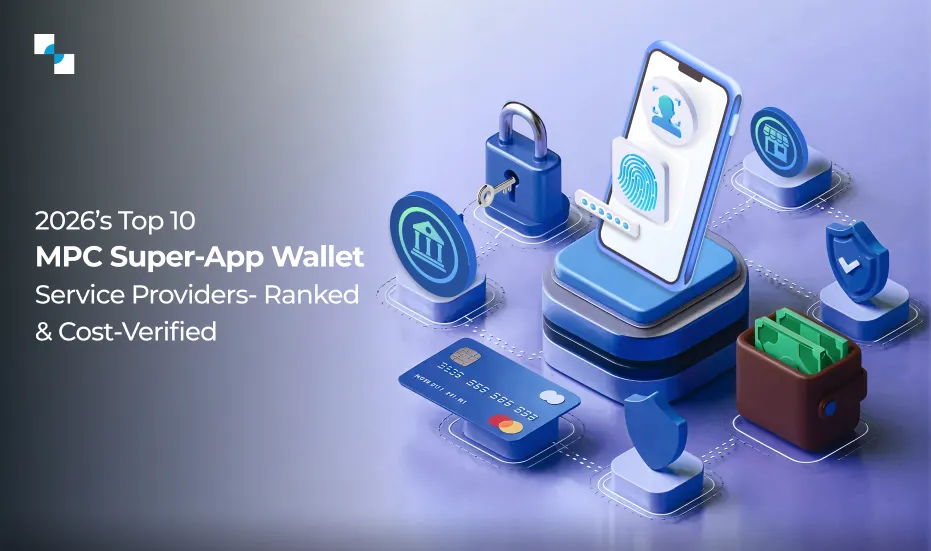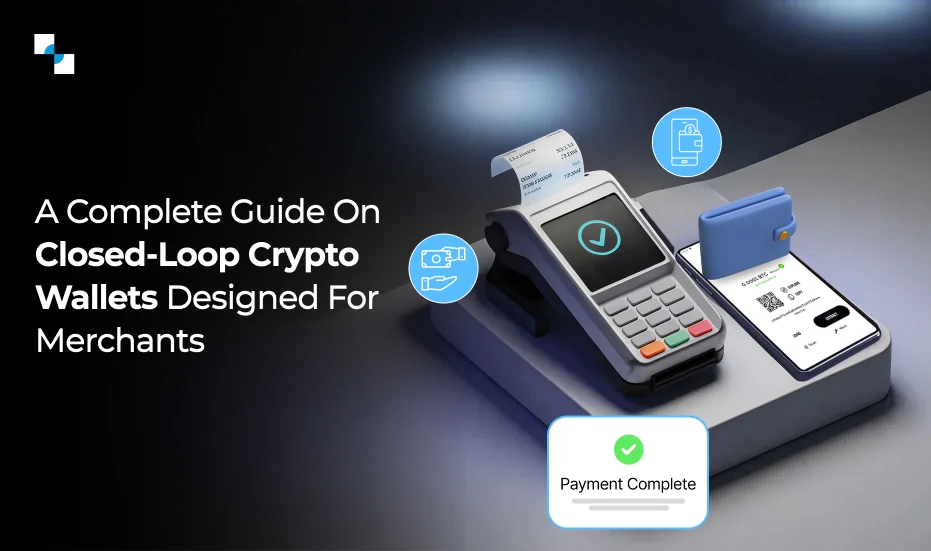Table of Contents
The crypto wallet market has experienced explosive growth in recent years. According to a prominent source, Fortune Business Insights, the global cryptocurrency market is projected to grow from $910.3 million in 2021 to $1,902.5 million in 2028 at a CAGR of 11.1% in the forecast period 2021-2028. The platform offers lucrative investment avenues and fierce competition. With the increasing number of digital asset holders, wallet providers have experienced an uphill battle to stand out in the competitive domain.
To succeed in the cutthroat environment, crypto wallet development teams need to strategize with focus and innovation. In this guide, we will unpack the top 5 strategies for building a winning crypto wallet and forging a path to success. These tactics will arm you with the tools you require to garner user attention and present yourself as an industry leader. Whether you are a novice or a seasoned crypto enthusiast, the insights will provide you with a roadmap to navigate the turbulent virtual currency realm:
Related: A Guide to Creating Arbitrum Crypto Wallet For Scalability & Analyzing Development Cost
Crypto Wallet Development Supremacy: 5 Surefire Strategies to Get An Edge
1. Concentrate on User Experience (UX) and Functionality
In the burgeoning crypto wallet development domain, user experience and functionality have emerged as key differentiators. Users prefer accessing wallets with simple navigation and fostering a seamless transaction experience. Invest heavily in UX research, design, and testing to get a simple, clean, and efficient design.
Include features that streamline crypto management and foster swift transactions. By including user-oriented design and practical use, you will create a crypto wallet solution that users would love to explore.
2. Focus Strongly on Security and Trustworthiness
Security has become a cause of concern among crypto wallet users, who will keep their assets within secure and reliable wallets. Develop a secure and trustworthy DeFi crypto wallet solution by implementing top-tier security mechanisms like Multi-Factor Authentication, Encryption, and Biometrics.
Clearly state the security measures, data protection policies, and commitment to user privacy that you adhere to while crafting the wallet. Get third-party certifications and industry recognitions to reinforce credibility and trust among the users.
3. Offer Multi-Currency Support
Users prefer accessing wallets to support diverse digital assets. Expand the range of cryptocurrencies your wallet supports, including Bitcoin and Ethereum, as well as emerging altcoins and stablecoins. This diversity will attract a broader user base and position your wallet as a comprehensive solution for cryptocurrency management.
Additionally, consider offering features that enable users to exchange one cryptocurrency for another easily within your crypto wallet solution. This convenience can be a significant draw for users who value the ability to manage their digital asset portfolio from a single platform.

4. Offer Unrivalled Customer Support
In this fast-paced and complicated crypto space, reliable and responsive customer support can emerge as a transformative force. Hire a knowledgeable and empathetic support team that identifies users’ concerns, troubleshoots issues, and follows best practices to mitigate them.
Use a Multi-Channel approach, including email, live chat, and social media, to mitigate user issues. Have a comprehensive knowledge base, detailed tutorials, and FAQs so that the users can independently handle common issues. Seamless customer support will provide you with a large user base and strengthen your rapport within the crypto space.
5. Leverage Partnerships and Integrations
Join hands with industry players to enhance the wallet’s value proposition. Discover strategic associations with crypto exchanges, DeFi platforms, or traditional financial systems. It also helps users access various financial services like trading, lending, or portfolio management. Besides, connect the wallet with popular applications such as dApps and Web3 ecosystems, making them a complete and valuable solution.
By exploring partnerships and integrations, you can offer enhanced functionality and tap a large audience while securing your position within the crypto domain.
Related: How to Develop an All-Card-Supported Crypto Wallet Solution
Remarkable Features of Crypto Wallets
Crypto wallets comprise remarkable features and functionalities that have been listed below:
1. Cross-chain bridge : The wallet supports multiple chains and allows seamless asset transfers, minimizing the need to create separate wallets.
2. Non-custodial : The wallet facilitates asset holding, sending, and receiving without depending on intermediaries, offering users complete control.
3. A built-in exchange : Users can get cryptos at the best exchange rates. Cryptos can be exchanged via a single click, streamlining the process of diverse portfolio management.
4. Cross-platform : The wallet can be accessed or managed through a web browser, iOS, or Android devices, offering users flexibility in asset management.
5. Free safe payments : Users can transfer assets between accounts without any fees. This makes it simple for the users to transact crypto assets.
6. QR codes or usernames for payment support : Registered users can send or receive cryptos via QR codes or usernames, providing a user-friendly and convenient payment method.
7. Bank card support : You can buy coins and tokens at the best prices via debit cards and streamline crypto asset purchases.
8. Joint accounts : Users can set up a wallet for their group mates to send and receive crypto on-demand or with a spending limit, providing a flexible and secure way to manage shared assets.
9. Industry-leading security : The wallet offers additional security options like personal code confirmation across all of a user’s devices, ensuring the safety and security of their crypto assets.

Unwinding the Exact Crypto Wallet Price Tag
The cost of developing a crypto wallet can be influenced by several key factors, as highlighted in the provided sources :
1. Technology Stack : The tech stack included within crypto wallet development impacts the project cost. Technologies and tools may vary in cost and require different development times and effort.
2. Features : The cost is affected by complexity and feature range. The more features, the higher the cost.
3. Design and User Experience : The wallet’s success depends on its design. Invest in a good UI/UX, which will be cost-saving and enhance user experience in the long run.
4. Team Size : The team size significantly impacts the development price tag. Hiring experienced professionals can be costly but will bring authentic and reliable solutions.
5. Top-tier security : Mechanisms like Two-Factor Authentication, Encryption, and Biometric Authentication will increase development costs. Security aspects are prioritized to prevent assets from vulnerabilities.
6. Testing and Debugging : Thorough testing and debugging are necessary to prevent vulnerabilities and tampering.
7. Maintenance and Support : Technical maintenance, back-end support, and regulatory compliance also contribute to the overall cost of developing a crypto wallet.
Things to Consider
- Building a successful crypto wallet demands a multifaceted approach.
- Concentrating on user experience, security, crypto support, and strategic partnerships can introduce an innovative solution and allure loyal users.
- Remember, the crypto wallet development segment is changing rapidly, so it’s essential to stay agile, monitor market trends, and continuously innovate to maintain a competitive edge.
Crypto Wallet Development Supremacy: How Antier Can Build a Winning Solution
Take advantage of Antier’s comprehensive crypto wallet development expertise. The experts develop secure, scalable, and cutting-edge solutions that give them a competitive edge in the industry. Their strategic alliance enables crypto wallet providers to hasten their development process. Develop winning crypto wallets or DeFi crypto wallet and make your mark within the crypto space by consulting the subject matter experts today!







